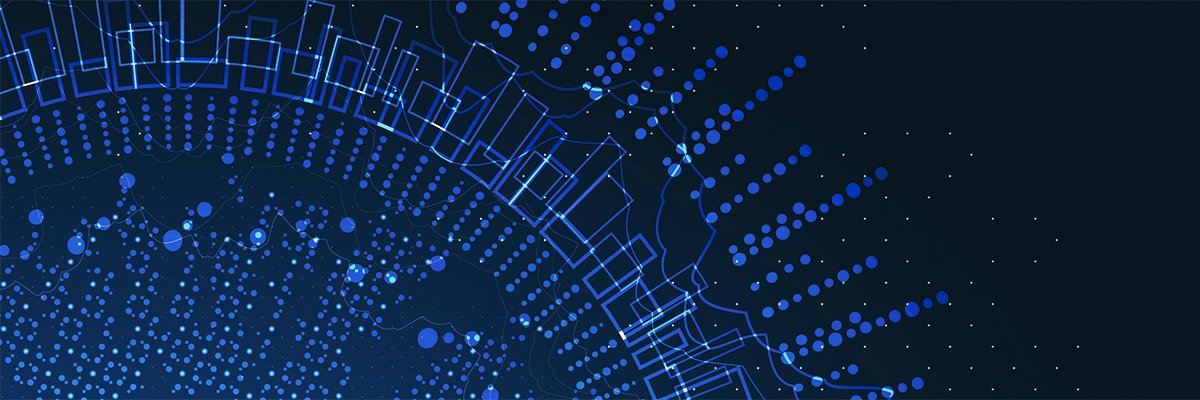A New Paradigm In Cybersecurity

Currently, many enterprises still focus on tower-based security (that is,
securing the “home”)—securing networks, datacenter, databases, endpoints,
applications and middleware and then applying horizontal security solutions for
rights management, policy, access management and authentication. The overarching
framework creates a secure environment, but fails to prevent breaches by
insiders or by external threat actors that have seized credentials or exploited
the hundreds of vulnerabilities in every domain at any given time. The crown
jewels—specifically data representing client information, contracts, legal
documents, employee information, KYC files and other pertinent information—must
remain secure and private, even if the credentials are breached, or
vulnerabilities lead to breach in the networks, data centers or endpoints.
Particularly in this era of increased cyber risk, along with growing reliance on
data across every industry, enterprise leaders should consider this level of
security and privacy, and this ease of access, as non-negotiable for keeping
their valuable data and digital assets safe.
EU opens Microsoft antitrust investigation into Teams bundling
:format(webp)/cdn.vox-cdn.com/uploads/chorus_asset/file/24347780/STK095_Microsoft_04.jpg)
The European Commission will now carry out an in-depth investigation into
whether Microsoft may have breached EU competition rules by tying or bundling
Microsoft Teams to its Office 365 and Microsoft 365 productivity suites. “Remote
communication and collaboration tools like Teams have become indispensable for
many businesses in Europe,” explains Margrethe Vestager, executive
vice-president in charge of competition policy at the European Commission. “We
must therefore ensure that the markets for these products remain competitive,
and companies are free to choose the products that best meet their needs. This
is why we are investigating whether Microsoft’s tying of its productivity suites
with Teams may be in breach of EU competition rules.” Microsoft has responded to
the EU’s complaint. “We respect the European Commission’s work on this case and
take our own responsibilities very seriously,” says Microsoft spokesperson Robin
Koch, in a statement to The Verge.
How to define your ideal embedded build system

You might think that your software stack has nothing to do with your build
system; However, the build configurations you select may dictate how your
software is organized. After all, building to simulate your application code
shouldn’t include low-level target drivers. In fact, you may find that even the
middleware you use is entirely different! Defining your ideal build
configurations may impact your software stack and vice versa. A modern embedded
software stack will include several layers of independent software that are
glued together through HALs and API’s. ... Today, are you using your ideal build
system? Do you even know what that ideal build system looks like and the
benefits it creates for your team? I highly recommend that you take a few
minutes to answer these questions. If you don’t have an ideal build system
you’re trying to reach, you can easily define your ideal system in 30 minutes or
less. Once you have your ideal build system, look at where your build system is
today. If it’s not your ideal system, don’t fret! Define some simple goals with
deadlines and work on creating your ideal build system.
The Future of the Enterprise Cloud Is Multi-Architecture Infrastructure

Data centers and the cloud grew up on a single, monolithic approach to computing
— one size fits all. That worked in the days when workloads were relatively few
and very straightforward. But as cloud adoption exploded, so too have the number
and types of workloads that users require. A one-size-fits-all environment just
isn’t flexible enough for users to be able to run the types of workloads they
want in the most effective and cost-efficient manner. Today, technologies have
emerged to overthrow the old paradigm and give developers and cloud providers
what they need: flexibility and choice. One of its manifestations is
multi-architecture, the ability of a cloud platform or service to support more
than one legacy architecture and offer developers the flexibility to choose.
Flexibility to run workloads on the architecture of your choice is important for
organizations for two reasons: better price performance and — a reason that is
far downstream from data centers but nevertheless important — laptops and mobile
devices.
The lost art of cloud application engineering

AI-driven coders learn from existing code repositories. They often need a more
contextual understanding of the code generated. They produce code that works but
may need help to comprehend or maintain. This hinders developers’ control over
their software and often causes mistakes when fixing or changing applications.
Moreover, the generated code must meet style conventions or best practices and
include appropriate error handling. This can make debugging, maintenance, and
collaboration difficult. Remember that AI-driven code generation focuses on
learning from existing code patterns to generate net-new code. Generative AI
coders have a “monkey see, monkey do” approach to development, whereas the
coding approaches are learned from the vast amount of code used as training
data. This approach is helpful for repetitive or standard tasks, which is much
of what developers do, but enterprises may require more creativity and
innovation for complex or unique problems.
Beyond generative AI, data quality a data management trend

"We have seen a belated -- but much required -- resurgence in the interest in
data quality and supporting capabilities," Ghai said. "Generative AI may be one
of the factors. But also organizations are realizing that their data is the only
sustainable moat, and without data quality, this moat is not that strong." Tied
in with data quality and observability, which fall under the purview of data
governance, Ghai added that data privacy continues to gain importance. "There's
a growing focus on building analytics with strong privacy protection via
techniques like confidential computing and differential privacy," he said.
... Like Ghai, Petrie noted that many organizations are prioritizing data
quality -- and overall data governance -- as their data volume grows and fuels
new use cases, including generative AI. "AI creates exciting possibilities," he
said. "But without accurate and governed data, it will not generate the expected
business results. I believe this realization will prompt companies to renew
their investments in product categories such as data observability, master data
management and data governance platforms."
What Exactly Does a Head of Enterprise Design Do?

Where the head of the enterprise design sits in the organizational hierarchy
depends on various factors, Heiligenthal said. Company size and maturity play a
role, but typically, she said, it starts in marketing and lands within product,
digital and technology groups. “Organizations can be matrixed or hierarchically
structured, and success depends on visibility within the organization. The
further the design organization is buried, the harder it is to receive buy-in
and get work done,” she explained. A struggle that many enterprises come up
against, she said, is how and where the design organization sits. “Is it
centralized, decentralized or embedded within products?” Each setup has its own
benefits and drawbacks, but what’s worked for her is a centralized partnership;
one with a distinct, centralized design team that shares a sense of purpose with
various product and business teams. “It’s a hub-and-spoke model that centralizes
design teams (the hub) and gives us freedom to execute across the organization
(the spokes) based on north-star alignment across the business.”
How Intelligent Automation is Driving Positive Change in the Public Sector

When implemented strategically and with the needs of an organisation at the
forefront, intelligent automation can support collaboration, communication and
new, modern ways of working, not only contributing to increased efficiency and
cost-effectiveness, but also boosting employee experience. In particular, the
elimination of repetitive, manual and time-intensive administrative work – which
is often cited as one of the main factors of public sector job dissatisfaction –
can help with retaining key talent within the sector. Along with meeting
employee expectations, strategic deployment of automation also helps public
bodies to keep pace with the expectations of the general public. Automation
allows citizens to access support more effectively, without the need for human
intervention, especially in the case of adult social services, being
resource-intensive centres that manage access to help and support across many
key areas such as pensions, healthcare and benefits.
Ethical Debt: Why ESG Matters As Much As Technical Debt

Ethical debt is the combined consequences of a lack of optimization in your
organization's environmental, social, and governance (ESG) capabilities. As
pressure on organizations to meet ethical standards intensifies, managing
ethical debt is becoming essential. ... Just like technical debt, the
consequences of ethical debt aren't just financial. Your debt getting out of
control can impact your reputation, relationship with regulators, talent
retention, and partnerships. Another key consideration of the concept of
ethical debt, however, is possible exploitation. When you're creating a
product, you now need to consider what the consequences could be if it is
misused by your customers. Ethical debt isn't just a theoretical
concept. ... Environmental, social, and governance (ESG) ethical debt is
much like technical debt. Every organization has a certain amount and getting
it down to zero is likely not worth your investment, but your ethical debt
must be reduced to a reasonable level or there will be consequences for your
organization.
Cloud Computing Services: Revolutionizing Data Management in Telecommunications

In addition to cost savings and scalability, cloud computing services also
provide robust data security. With cyber threats becoming increasingly
sophisticated, data security is a top priority for telecommunications
companies. Cloud service providers employ advanced security measures,
including encryption and multi-factor authentication, to protect data from
unauthorized access. Furthermore, data stored in the cloud is typically backed
up in multiple locations, ensuring its availability even in the event of a
disaster. The integration of cloud computing services in telecommunications
also facilitates improved collaboration and productivity. With data stored in
the cloud, employees can access it from anywhere, at any time, using any
device with an internet connection. This promotes a more flexible and
efficient work environment, enabling teams to collaborate effectively
regardless of their geographical location. The adoption of cloud computing
services in telecommunications is also driving innovation.
Quote for the day:
"Leaders are the ones who keep faith
with the past, keep step with the present, and keep the promise to
posterity." -- Harold J. Seymour
No comments:
Post a Comment